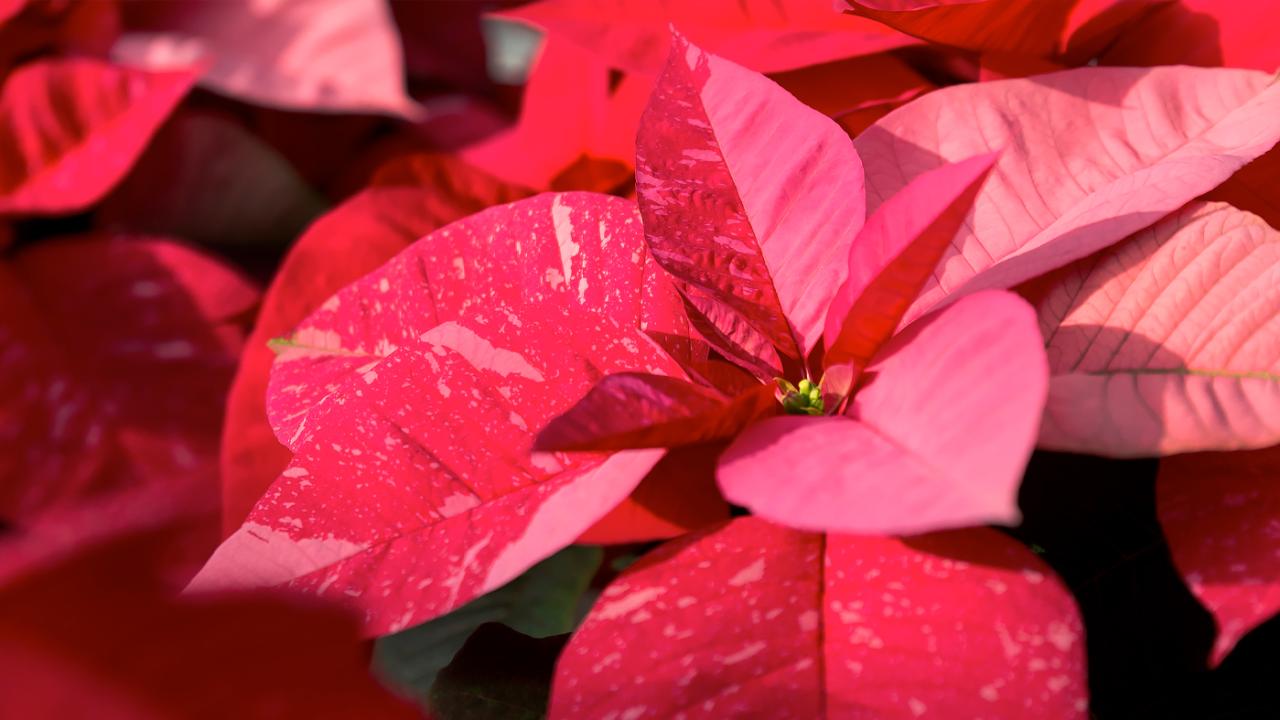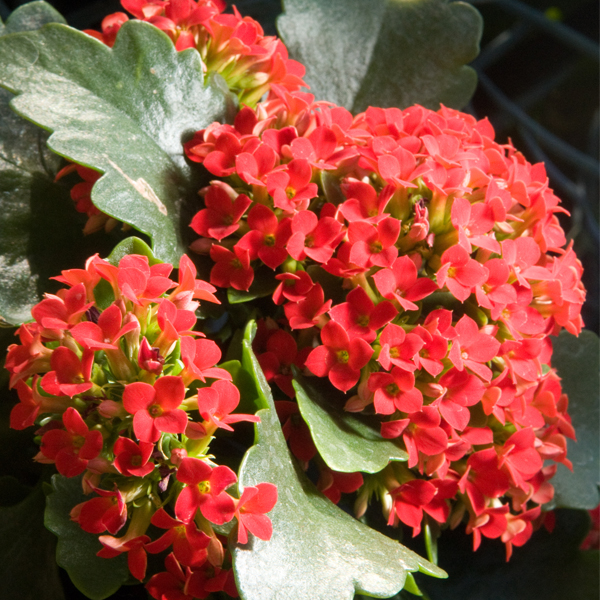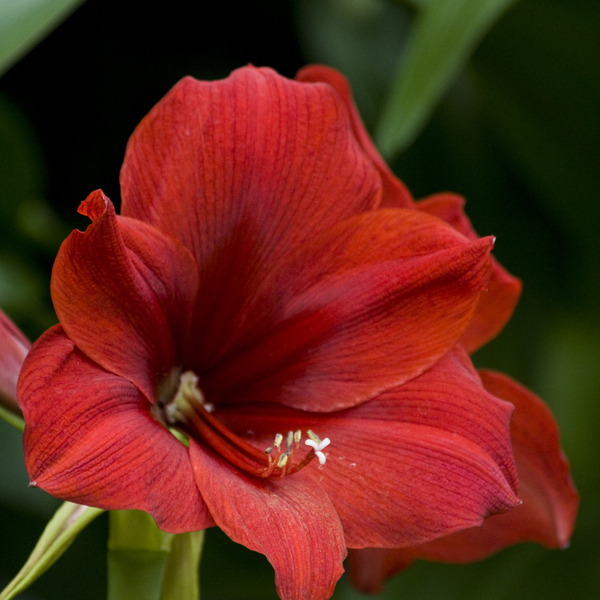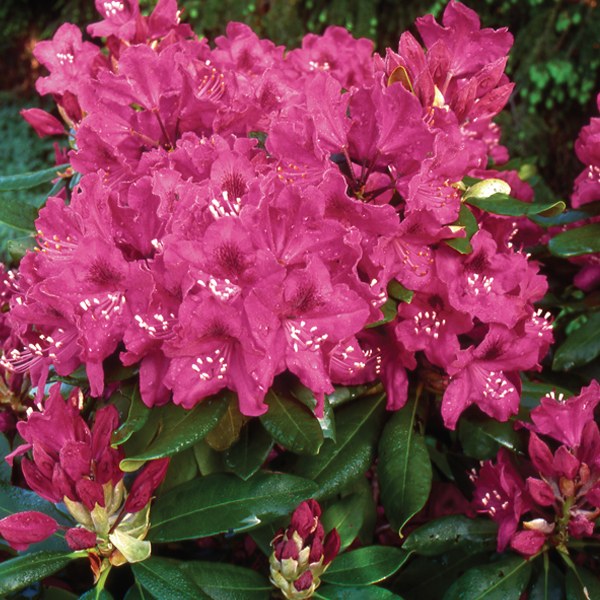

Holiday Plants...That Keep on Giving
A plant is one of my favorite gifts, both to give and receive.
I am, however, not inclined to throw out these beauties once the holiday festivities have passed and the decorations are packed away. Faced with the rather empty, bleakish winter months, we should welcome the presence of anything bright, colorful, fragrant, and alive! Tossing out leftover wrapping paper is one thing, but pitching out a moth orchid whose blossoms have withered is a dastardly deed. A few simple conservation techniques applied through winter and spring will give you a round of fresh flowers next year. In the interest of full disclosure, I do not attempt to keep a poinsettia alive year-round. It is too frightening to see it virtually naked in spring. Let's examine a few other holiday plants and review the simple steps to keep them healthy and the gardener happily busy.

Kalanchoe
These bright little flowering plants are commercially propagated so their bloom now coincides with our colder months. Although the tiny flowers can range from yellow, orange, and pink, it is the red- and white-flowering varieties that tend to dominate during December and January. They are succulents, like cactus, and as such, should never be overwatered. Small but mighty, they'll bloom for a long time, especially if the plant boasted lots of buds, not flowers, when it was purchased. It prefers bright light, sparse watering, and no fertilizer while in bloom. Because it's a succulent, it has no need for extra humidity.
When all the flowers have dried, cut off the flower stalks and move the plant to a shadier window and cut back on watering to force its dormant period. When new buds appear, in one to two months, move it back into bright light, resume watering, and fertilize twice a month with a dilute balanced fertilizer. If you want to move it outside to a part-sun location in summer, pot it up with other kalanchoe plants, or succulents, in a container filled with a cactus mix blend. In fall, repot individual plants into small containers, preferably clay, and bring them back inside.

Phalaenopsis
A moth orchid is the easiest orchid to grow and the easiest to coax into rebloom. It's also the longest-blooming indoor plant (three months is not unusual), and requires a minimal amount of care. Again, orchids have been bred to bloom in winter, when the selection is enormous, especially in good garden centers or specialty orchid nurseries. Bright light, with little direct sun, in a normally heated room is fine for moth orchids. As with all indoor plants, avoid putting it on a radiator or air conditioner, in front of a drafty window or door, or in an unheated sun porch! This plant does appreciate humidity (think rain forest) so a bright, warm bathroom would be a perfect permanent location, or temporary vacation spot.
The orchid will come potted up in either bark chips or a lightweight moss product. Bark drains more quickly so it's actually difficult to overwater an orchid planted in this medium. Not so with moss. Water when the pot feels “light” to the heft. As you lift it up, the pot should feel like it needs water. Use lukewarm water and avoid pooling water in the rosette of leaves. Water the medium, not the leaves.
When the last flower has withered and dropped, you can do one of three things. Some cut the arching green stem back to a healthy node in the hopes that a new stem will arise from that cut. Others wait until the entire stem yellows and then cut it off at the base. Impatient gardeners, like myself, cut the green stem off and get on with the business of fertilizing once a week with a very dilute orchid fertilizer. Fertilizing is essential since it provides the plant with the extra nutrition it needs to produce another set of stunning flowers. There is little nutritive value in fir bark or moss, so the plant will count on you to supply its food.
Moth orchids are one of the few houseplants not anxious to move outside in late spring. They are homebodies and love the consistent conditions of indoor life. Besides, when grown on your windowsill, you can observe them daily and watch for the telltale new green stem shoot in about nine months. Talk about joy!

Amaryllis (Hippeastrum)
Big, bold, and beautiful, this bulbous plant is too often discarded as soon as it finishes flowering.Considering how expensive the bulbs have become, why do this? Instead, remove the dried flowers, let the stem yellow and then cut it off. Most often, the flowers precede the leaves, which grow long and strappy. Leaves make the food/energy that is stored in the bulb to produce future blooms. Keep the pot in a bright window and continue your normal watering regimen. Bulbs (indoor and outdoor) hate soggy soil and will rot out if inundated with water.
In spring, move the pot outside where it receives morning sun. Don't forget where you put it because you'll need to supply it with liquid fertilizer every other week. In September, bring it indoors (a cool garage is great) and cut off all the leaves. This will be its dormant period so just forget about it until you see a new green shoot growing in your garage! This is your cue to bring it into the house and begin normal watering.

Azalea
What plant could remind us of spring more than the floriferous azalea? If purchased as a budded plant rather than a fully blooming one, it will delight you with months of single, double, or semi-double blooms in white, lavender, pink, picotee, and the holiday favorite—red. Azaleas like bright light (no direct sun), warm windows, and evenly moist soil. Don't let it dry out or it will punish you with wilted foliage and dried-up flowers. On the other hand, don't flood it with kindness.
A healthy specimen will gradually cover itself with flowers, rather than blooming all at once. You can keep it tidy and fresh by gently removing any dried trusses. Fertilizer is not necessary when the plant is in flower but it is necessary once blooming has ended and the azalea is outside in a partly shaded spot. Watch the watering when you move a plant outside. You'll be surprised how quickly soil dries out, even in shaded spots. Water the plant first, then apply a dilute balanced fertilizer or choose a product developed especially for ericaceous plants (acid-loving). Use it twice a month but skip applications if the summer is very hot. All houseplants and landscape plants can burn if fertilized in high temperatures.
Azaleas form flower buds by summer's end. Allow the plant to experience the cooling-down period of early fall before you bring it inside once again for another magnificent show.
Lee Randhava is a horticultural writer who lives and gardens in Evanston, Illinois.

